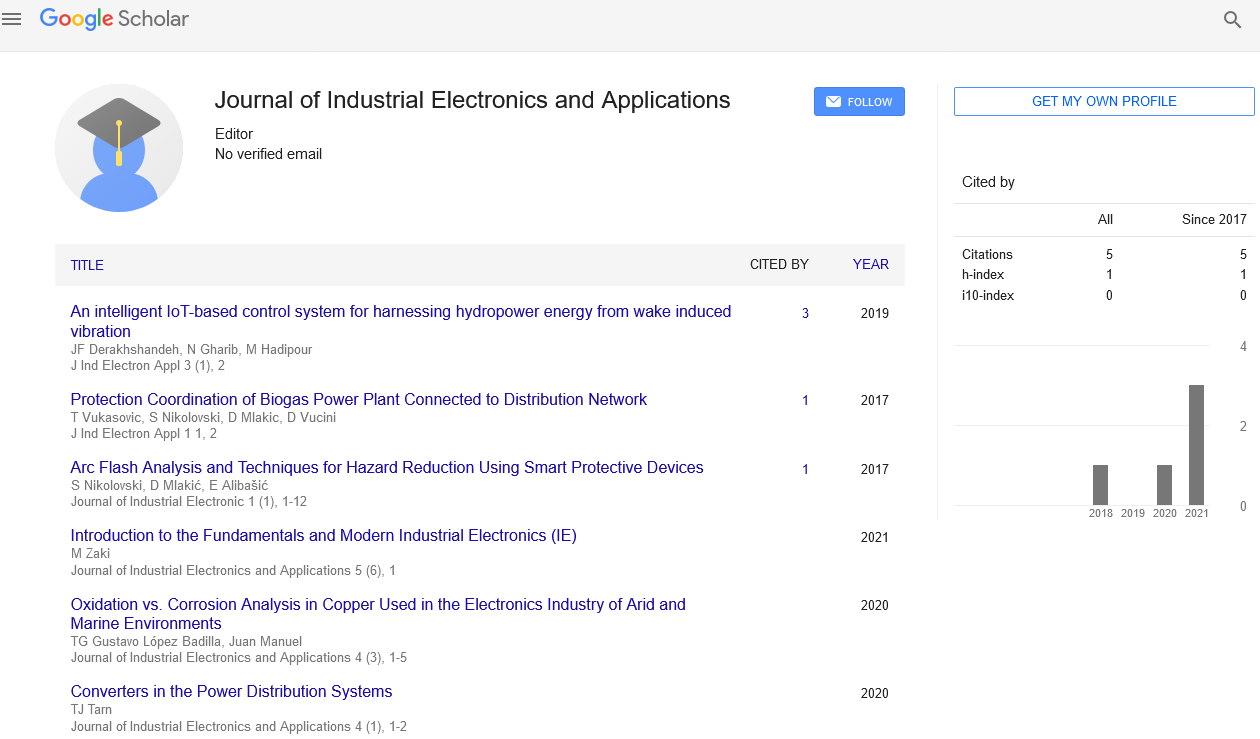Opinion Article, Vol: 7 Issue: 3
The Evolution of Robotics: A Comprehensive Exploration of their Varied Applications and Game-Changing Influence
Hwang chen*
1Department of Physics, University of Basel, Basel, Switzerland
*Corresponding Author: Hwang chen,
Department of Physics, University of Basel,
Basel, Switzerland
E-mail: hwangchen.121@gmail.com
Received date: 05 September, 2023, Manuscript No. JIEA-23-117720;
Editor assigned date: 07 September, 2023, PreQC No. JIEA-23-117720 (PQ);
Reviewed date: 21 September, 2023, QC No. JIEA-23-117720;
Revised date: 29 September, 2023, Manuscript No. JIEA-23-117720 (R);
Published date: 06 October, 2023, DOI: 10.36648/JIEA.1000038
Citation: Chen H (2023) The Evolution of Robotics: A Comprehensive Exploration of their Varied Applications and Game-Changing Influence. J Ind Electron Appl 7:3.
Abstract
Description
Robots have transcended the realm of science fiction to become an integral part of modern society. Their applications are widespread, from manufacturing and healthcare to space exploration and everyday household chores. The diverse utilization of robots and the transformative impact they have on various sectors. Robots have revolutionized the manufacturing industry, driving efficiency, precision, and cost-effectiveness. Industrial robots perform a range of tasks, from welding and painting to assembly and quality control. They are not only faster and more accurate than human workers are but also thrive in monotonous, high-risk environments, enhancing safety and productivity.
Automated Guided Vehicles (AGVs) and Autonomous Mobile Robots (AMRs) are gaining popularity in logistics and warehouses. They autonomously transport goods, optimize inventory management, and improve supply chain operations. In the era of Industry 4.0, robots equipped with sensors and Artificial Intelligence (AI) capabilities are playing a pivotal role in creating smart factories.
Healthcare and Medical Robots
Robots are enhancing patient care and supporting medical professionals in healthcare settings. Surgical robots, such as the da Vinci Surgical System, enable minimally invasive procedures with exceptional precision. Robots assist in tasks like complex surgeries, diagnosis, and rehabilitation, reducing recovery times and improving outcomes. In addition to clinical roles, service robots are designed to provide companionship and aid to the elderly and individuals with disabilities. These robots can monitor vital signs, deliver medications, and offer emotional support, addressing the challenges of an aging
population and the increasing demand for healthcare services. Space and deep-sea exploration are inherently risky and often unreachable for humans. Robots, in the form of rovers, drones, and submersibles, extend our reach into uncharted territories. NASA's Mars rovers, for instance, have provided invaluable insights into the Red Planet's geology and potential for life. Similarly, Autonomous Underwater Vehicles (AUVs) explore the depths of the ocean, mapping the seafloor, studying marine ecosystems, and searching for shipwrecks. These robots are vital tools for scientific research and resource exploration.
Robots are widely used in education and research, providing handson learning experiences and advancing our understanding of artificial intelligence and robotics. Educational robots, like LEGO Mindstorms and the MIT-developed Scratch platform, teach students coding, engineering, and problem-solving skills in an engaging manner.In research, robots serve as testbeds for AI algorithms and cognitive science. They help us understand human-robot interaction, natural language processing, and the development of autonomous systems. These advancements have far-reaching implications for various industries, including self-driving cars and smart cities. The influence of robots extends to our daily lives. Robotic vacuum cleaners, like the Roomba, have become household staples, saving time and effort in cleaning tasks. Companion robots, like Pepper and Jibo, offer entertainment, assistance, and information in homes and businesses. The automation of routine chores, from dishwashing to lawn mowing, allows humans to focus on more meaningful and creative endeavors. With advancements in voice recognition and AI, robots like Amazon's Alexa and Google Assistant have become virtual assistants, managing smart homes and providing information at our fingertips. While the utilization of robots offers numerous benefits, it also poses challenges. These include concerns about job displacement, data privacy, security, and the ethical implications of autonomous decision-making. Striking a balance between the advantages of automation and addressing these challenges is crucial.
Conclusion
Robots have come a long way from their early, rudimentary forms to being versatile tools with the potential to revolutionize various industries and improve our daily lives. As technology continues to evolve, we can anticipate robots becoming more sophisticated, interconnected, and integrated into society. With responsible development and consideration of ethical and social implications, the continued utilization of robots promises to make our world more efficient, productive, and accessible for all. With advancements in voice recognition and AI, robots like Amazon's Alexa and Google Assistant have become virtual assistants, managing smart homes and providing information at our fingertips. While the utilization of robots offers numerous benefits, it also poses challenges.
 Spanish
Spanish  Chinese
Chinese  Russian
Russian  German
German  French
French  Japanese
Japanese  Portuguese
Portuguese  Hindi
Hindi 